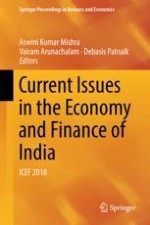2018 | OriginalPaper | Buchkapitel
2. Demand for Money in India: An ARDL Approach
verfasst von : Abdul Rishad, Akhil Sharma, Sanjeev Gupta
Erschienen in: Current Issues in the Economy and Finance of India
Aktivieren Sie unsere intelligente Suche, um passende Fachinhalte oder Patente zu finden.
Wählen Sie Textabschnitte aus um mit Künstlicher Intelligenz passenden Patente zu finden. powered by
Markieren Sie Textabschnitte, um KI-gestützt weitere passende Inhalte zu finden. powered by
